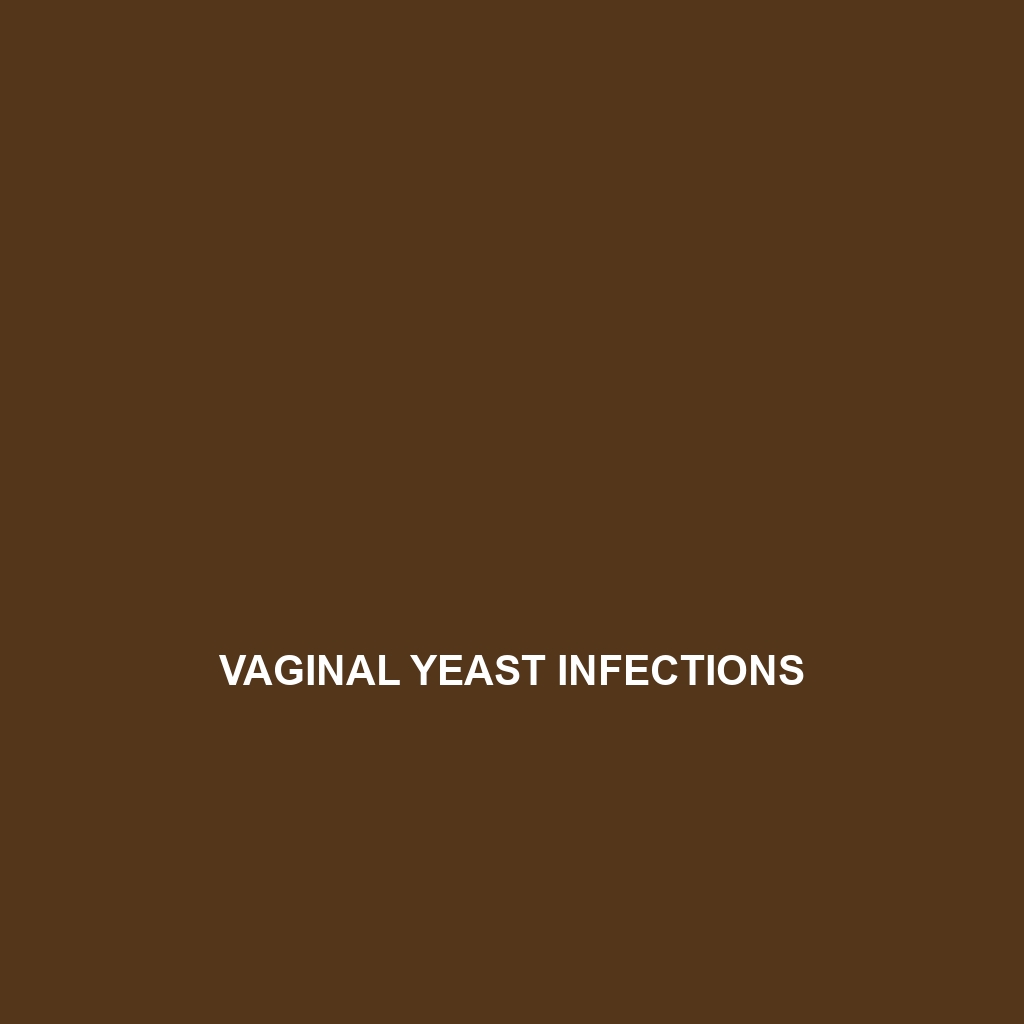Vaginal Yeast Infections:
Definition and Description of Vaginal Yeast Infections:
Vaginal yeast infections, also known as vulvovaginal candidiasis, are infections caused by an overgrowth of yeast, typically Candida albicans, in the vaginal area. While a small amount of yeast is normally present, an imbalance can lead to symptoms and discomfort. This condition is characterized by inflammation of the vaginal walls and vulva, resulting in significant irritation and distress.
Causes of Vaginal Yeast Infections:
Several factors can contribute to the development of vaginal yeast infections. These include underlying medical conditions such as diabetes and HIV, which can weaken the immune system. External factors such as antibiotic use, hormonal changes associated with pregnancy or birth control pills, and wearing tight clothing can also promote yeast overgrowth. Additionally, some individuals may have a genetic predisposition to recurrent infections.
Associated Symptoms of Vaginal Yeast Infections:
Common symptoms associated with vaginal yeast infections include:
– Itching and irritation in the vaginal area
– Redness and swelling of the vulva
– Pain during intercourse
– Discomfort during urination
– A thick, white vaginal discharge resembling cottage cheese
Diagnosis of Vaginal Yeast Infections:
Diagnosis of vaginal yeast infections typically involves a healthcare professional conducting a pelvic examination and reviewing the patient’s medical history. Further tests may include a vaginal swab to analyze discharge under a microscope, which can reveal the presence of yeast and confirm the diagnosis.
Risk Factors for Vaginal Yeast Infections:
Certain individuals may be more susceptible to vaginal yeast infections. Risk factors include:
– Age: Most prevalent in women of reproductive age.
– Lifestyle: A high-sugar diet, smoking, and uncontrolled diabetes can increase risk.
– Antibiotics: Use of these medications can disturb the natural vaginal flora.
Complications of Vaginal Yeast Infections:
If left untreated, vaginal yeast infections can lead to complications such as recurring infections, secondary infections that could spread to other areas, and increased susceptibility to sexually transmitted infections (STIs). Persistent infections may also cause emotional distress and affect sexual health.
Treatment Options for Vaginal Yeast Infections:
Treatment for vaginal yeast infections often includes antifungal medications. These may be available as over-the-counter creams, ointments, or suppositories, or prescribed as oral medications. Home remedies, such as probiotic supplements and dietary adjustments, may also support recovery.
When to See a Doctor for Vaginal Yeast Infections:
It’s advisable to consult a healthcare provider if symptoms persist for more than a few days despite treatment, recur frequently, or if there are signs of severe irritation, swelling, or unusual discharge resembling other infections.
Prevention of Vaginal Yeast Infections:
Preventative measures include:
– Wearing breathable cotton underwear
– Avoiding douching or using scented feminine hygiene products
– Keeping the vaginal area dry and clean
– Managing underlying health conditions
Statistics and Prevalence of Vaginal Yeast Infections:
Vaginal yeast infections are quite common, affecting up to 75% of women at least once in their lifetime. Approximately 50% of those women experience recurrent infections within a year.
Personal Stories or Case Studies about Vaginal Yeast Infections:
Many women have shared their experiences of battling recurring vaginal yeast infections, highlighting the emotional and physical toll it has taken on their lives. These narratives underscore the importance of seeking medical advice and the need for awareness and education about the condition.
Myths and Misconceptions about Vaginal Yeast Infections:
There are several myths surrounding vaginal yeast infections, such as the belief that they are sexually transmitted. In truth, while sexual activity can contribute, they are primarily caused by an imbalance of yeast present in the body. It is also a common misconception that all vaginal discharges are indicative of yeast infections; other conditions may produce similar symptoms.
Support and Resources for Vaginal Yeast Infections:
For those dealing with vaginal yeast infections, there are several resources available for support and further reading. For more information, visit this support page for additional resources and help.
Conclusion about Vaginal Yeast Infections:
Vaginal yeast infections are a prevalent concern affecting many women. Understanding the causes, symptoms, and treatment options is crucial for effective management. Seeking medical advice and following preventative measures can help alleviate and prevent these infections.
